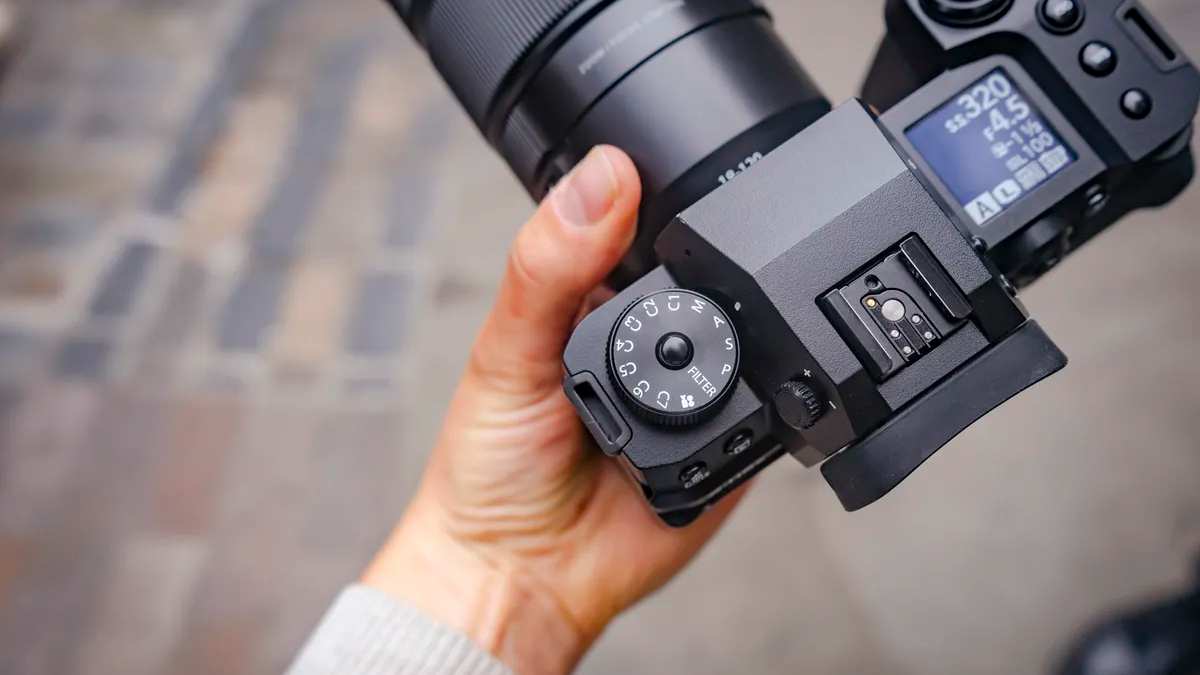It’s a Leica showdown! Can the Leica co-engineered Xiaomi 15 Ultra take on Leica’s own D-Lux 8 compact camera?
Can a smartphone beat a compact camera? I’m pitting the Xiaomi 15 Ultra against the Leica D-Lux 8 to find out!

Thought you’d never be able to own a Leica? Well, not anymore! What was once the preserve of only the most deep-pocketed photographers is coming to the masses. Well… sort of.
Let's be real, Leica’s SL cameras or the M Series rangefinders you might have drooled over on social media are not getting any more affordable. But the brand’s canny partnerships are bringing Leica expertise in lens manufacture and color science to a whole new audience. Leica has a slice of the action-camera pie thanks to a collaboration with Insta360 (the Ace Pro 2), as well as moving into phones with a very well-received series of collaborations with phone maker Xiaomi, starting with 2022’s Xiaomi 12S Series. This partnership continues today, with the latest Xiaomi 15 Ultra sporting a quartet of Leica co-engineered cameras on the rear.
This could have made the Xiaomi 15 Ultra both the most affordable and most pocketable Leica camera – although Leica’s own compact D-Lux 8 might have something to say about that.
Launched last year, the D-Lux 8 is the latest in Leica’s compact camera series, and brings the design of the camera up-to-date with Leica’s recent Q3 models – although it disappointingly lacks any major changes to the internals from the D-Lux 7. But most surprisingly for a Leica camera proudly displaying its red-dot – it is relatively affordable. While yes, there are far cheaper compact cameras, the D-Lux 8 actually comes in around the same price as the darling of social media, the Fujifilm X100VI.
But with such different form factors, different sensors, and different lenses, how does the D-Lux 8 stack up against the Xiaomi 15 Ultra, and is the Leica name enough of a connecting thread? Let’s find out…
Image Quality
- Leica D-Lux 8: 17MP Micro Four Thirds (4/3”) sensor, 24–75 mm, f/1.7–16
- Xiaomi 15 Ultra: 23mm - 50MP 1” sensor f/1.63 | 100mm - 200MP 1/1.4" sensor f/2.6 | 70mm - 50MP 1/2.51" sensor f/1.8 | 14mm - 50MP 1/2.76" sensor f/2.2
Leica’s D-Lux 8 sticks to classic camera science. Its 17MP Micro Four-Thirds sensor might have a relatively low resolution, but it is far bigger than the largest 1-inch sensor in the Xiaomi. And a bigger sensor should produce images with a more "camera-like" look with natural depth of field.
But what it lacks in size, the Xiaomi makes up for in brute computational force. Its 1-inch 50MP main sensor, flanked by two further 50MP cameras (telescope & ultrawide) and a 200MP periscope, all do their best to compensate for smaller areas.
The best camera deals, reviews, product advice, and unmissable photography news, direct to your inbox!
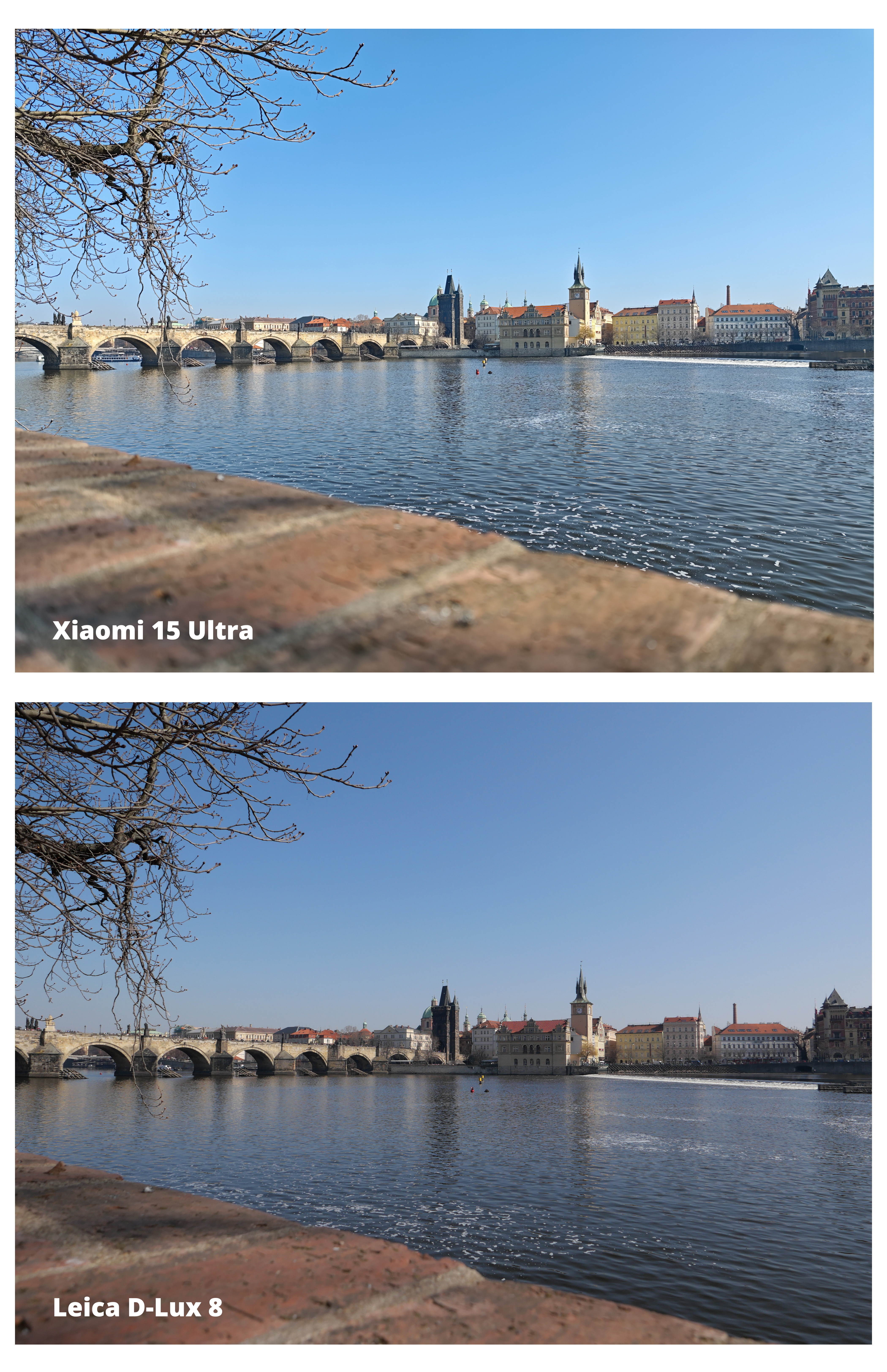

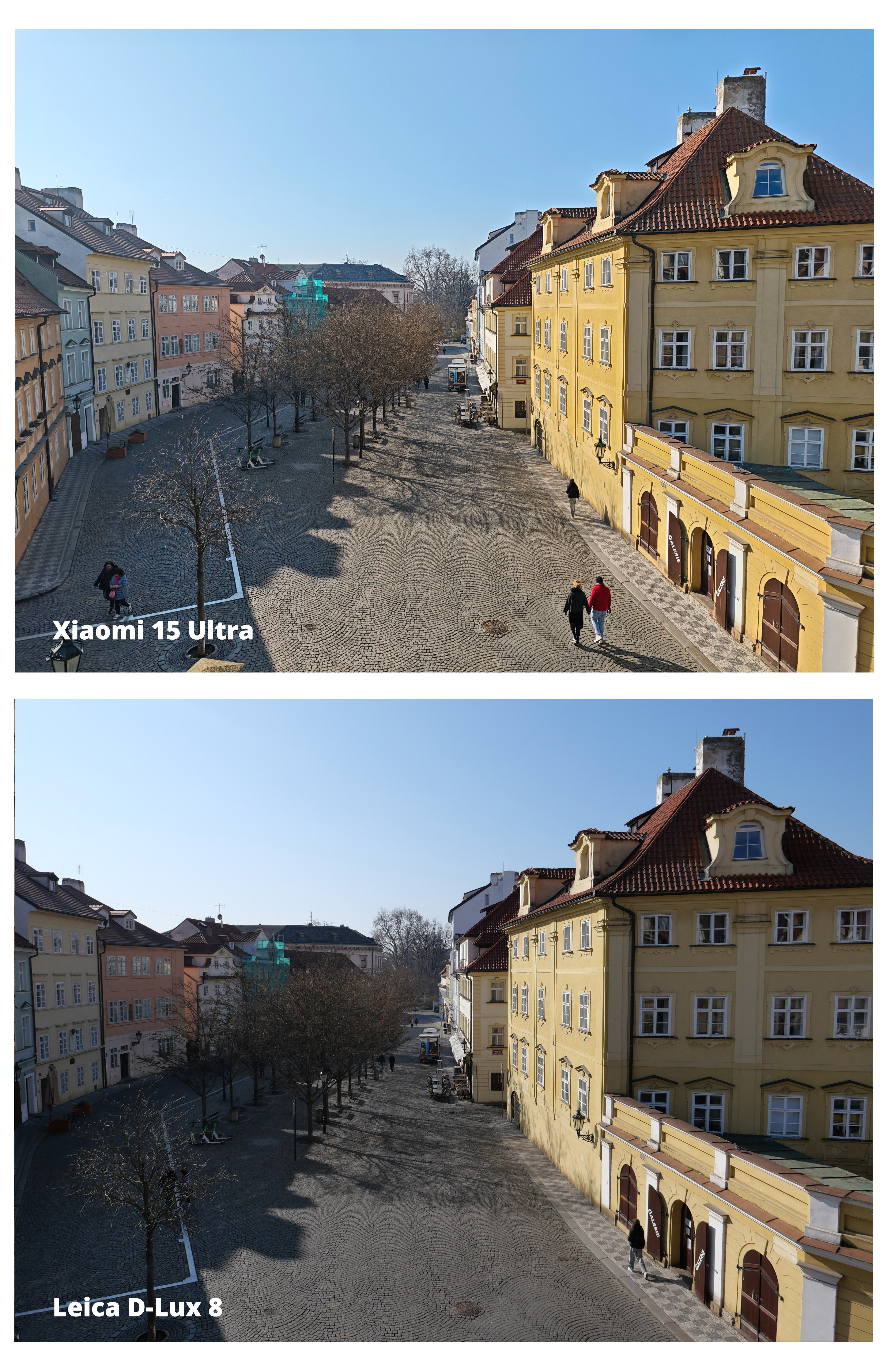
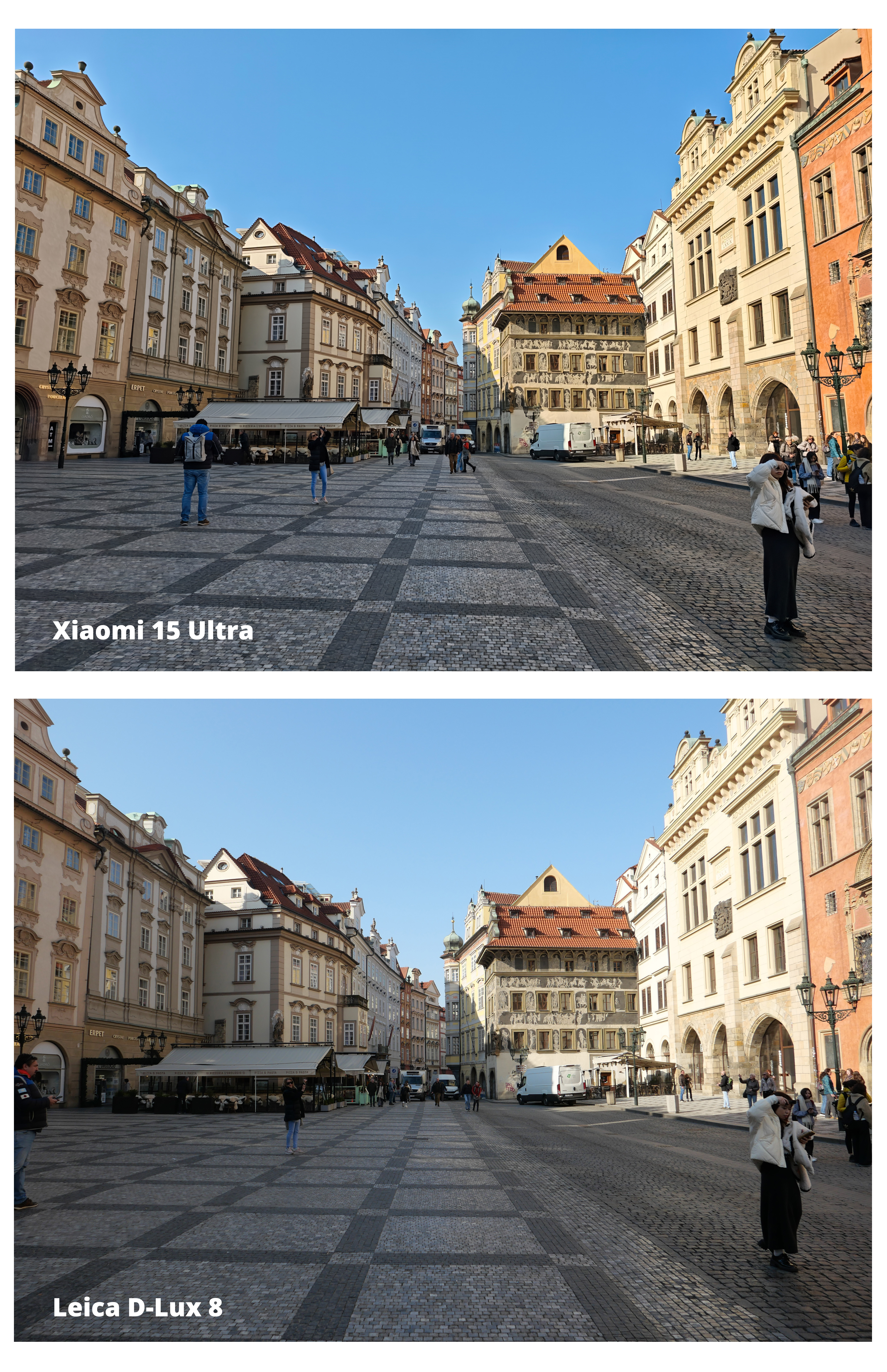
I think the photos are definitely going to divide people on which camera is better, based on some personal tastes. Straight out of camera, I prefer the look of the Xiaomi photos. I think they just have a little more life to them, colors are rendered nicely, with a little more pop, and the HDR balance, while leaning a little on the heavy side, I think, makes for a more pleasing photo than the duller Leica images. The D-Lux images are flatter, with muted tones and colors, but perhaps are far more true to life, and if you want to edit your JPEGs, this would be a better starting point.
However, for more serious editing, both cameras also shoot RAW DNG files, so if you have particular presets you like to use, you can do this with both.
Sharpness is fairly equal between the two. Phones are usually notorious for applying a severe sharpening layer, but the Xiaomi images, while a touch oversharpened, still have a natural look to them.

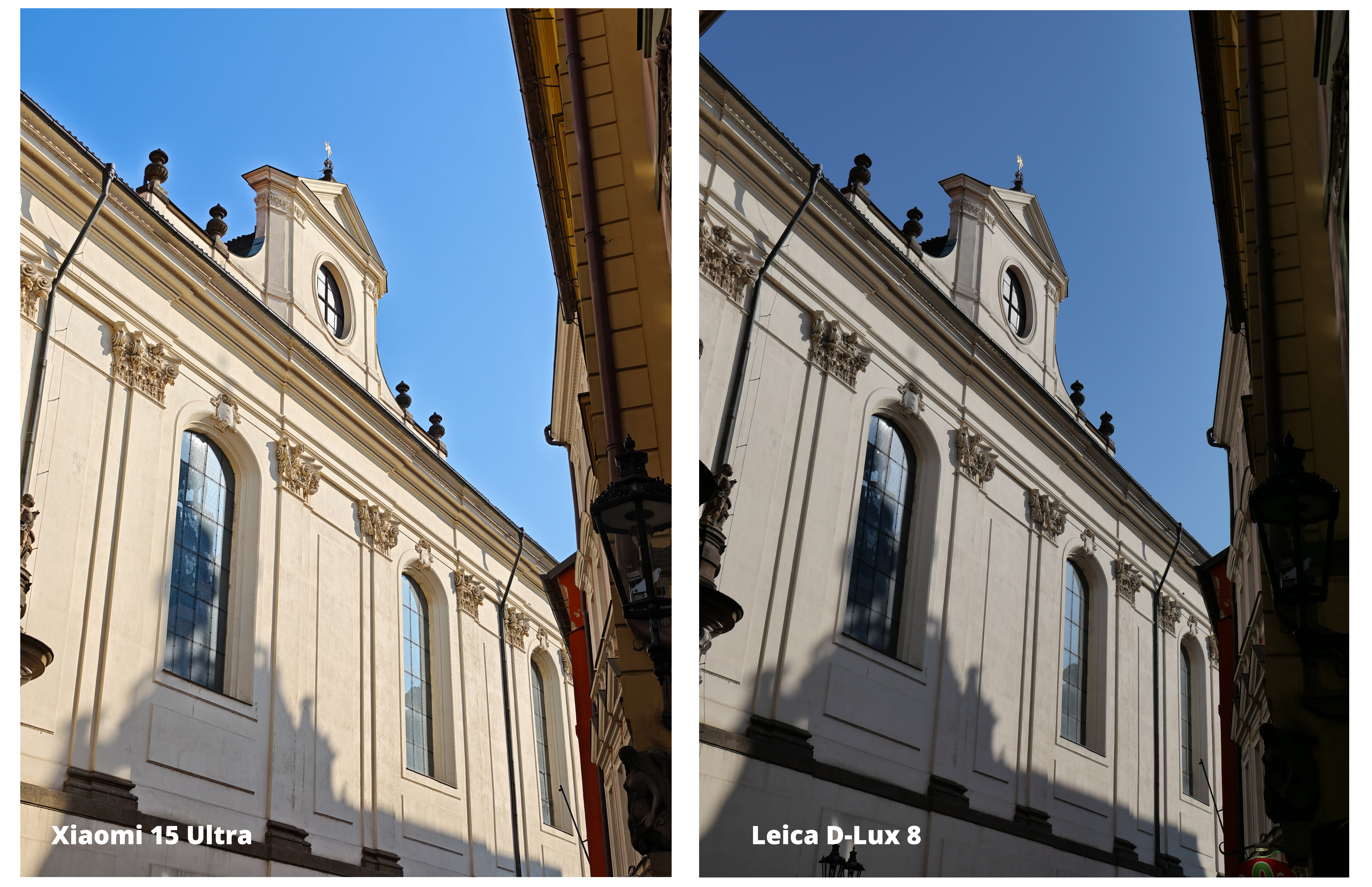

But when it comes to versatility, the phone and its four lenses, plus computational zoom, sticks its nose way out in front. The D-Lux 8's 24–75 mm lens covers a good range, from street photos to portraits, but the Xiaomi's 14mm ultra-wide up to its 100mm periscope telephoto (with a 23mm and 70mm lens in between) offer a range of native focal lengths, plus I was comfortably getting near perfect looking shots up to 250-300mm with the 15 Ultra using it's AI-assisted zoom. And it does all of this without having to move any physical parts or make the lens bigger. But is AI-powered computational zoom cheating? That's for you to decide.
The Xiaomi also has the edge with macro photography, with its 70mm telephoto lens focusing on subjects just 10cm away. The D-Lux 8 can focus in its macro mode down to 3cm, although this is at the wide end of the lens – which is just a horrible field of view for macro photography – at the tele end of the lens, the close focus distance jumps up to 30cm.
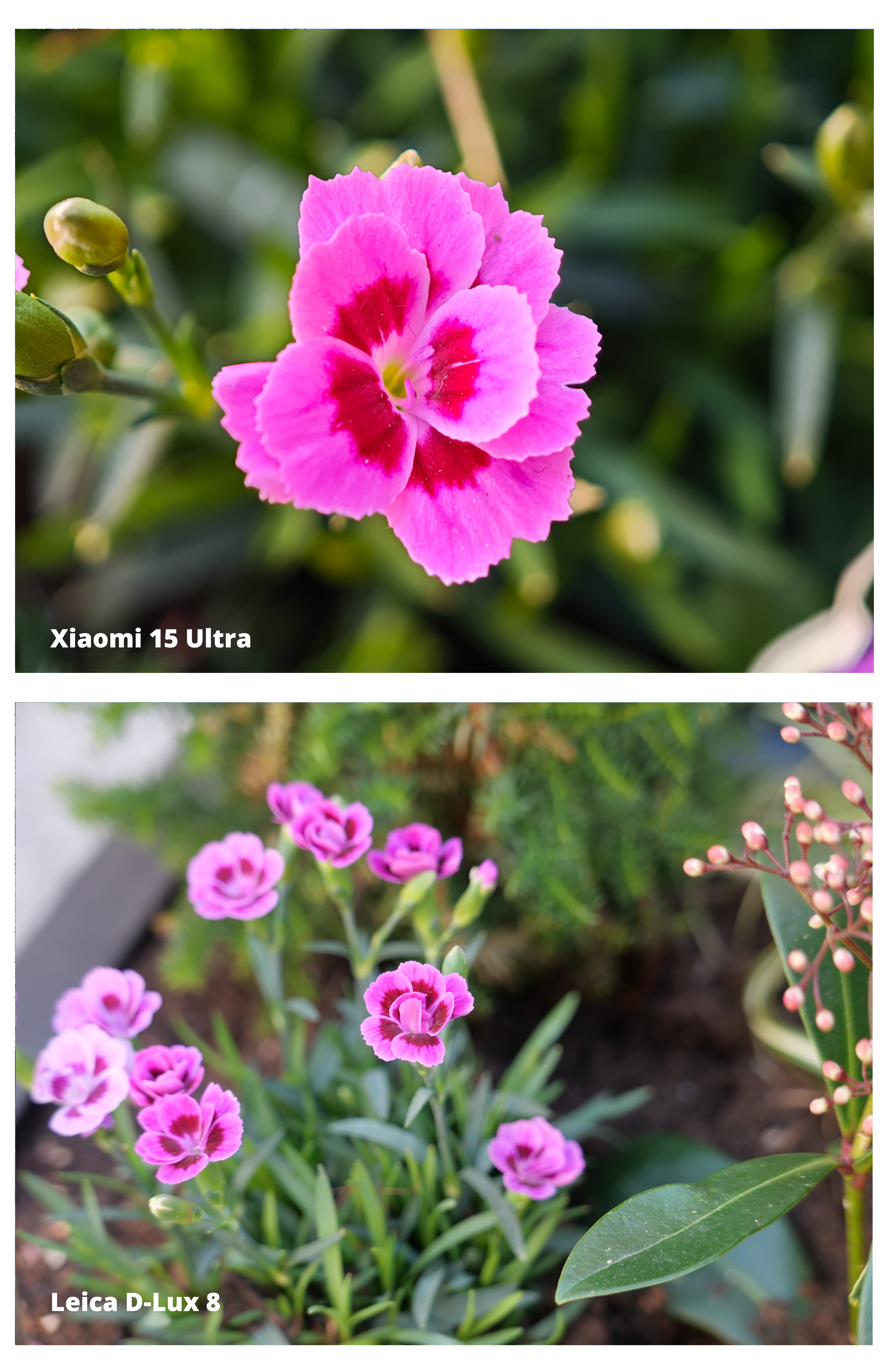
Video Quality
- Leica D-Lux 8: 4K30P / FHD 60P
- Xiaomi 15 Ultra: 8K30P / 4K120P / FHD 1920P
From a quick glance at the specs alone, it is fairly obvious which is going to come out on top. The Xiaomi offers 8K60P or 4K120P, both of which can be recorded in 4:2:2 10-bit LOG. While the best the D-Lux 8 can do is 4K30P 4:2:0 8-bit with a crop.
But if you forget specs for a second, and just compare 4K30p – I do slightly prefer the footage coming from the D-Lux 8. The Xiaomi goes just a little too heavy on the HDR processing – the lights and shadows are perfectly balanced – but the lack of contrast made the footage just feel a little less cinematic. I also slightly prefer the color tuning on the D-Lux, especially reds. It's not a world of difference from the Xiaomi, but we are nit-picking here, and the Xiaomi's video colors are a little more "standard".
When it comes to moving around, though, forget about using the D-Lux 8. Autofocus is pretty dire, and image stabilization is next to useless, even when trying to handhold a steady shot. This is in stark contrast to the Xiaomi 15 Ultra, which has gimbal-like stabilization, yet maintains a similar field of view to the Leica.
I’d love to say this is a close-run race, but for me, the Xiaomi wins this one by a country mile.
Build
- Leica D-Lux 8: 397g | 130 x 69 x 62 mm
- Xiaomi 15 Ultra: 226g | 161.3 x 75.3 x 9.4 mm
Not to state the obvious, but one is a phone and the other is a compact camera, so this is already very much comparing apples and oranges.
As a phone, the Xiaomi naturally has its advantages of being slim enough to slide into a jeans pocket and apart from the slight hump of the camera island, it has no other extruding parts that might otherwise make carrying more awkward. There is also the distinct advantage over the D-Lux of a stunning 6.73-inch screen for image and video playback. In use, the 15 Ultra feels really good with a polished metal rail and satin smooth glass back panel, and it sits comfortably enough in the hand with the slight curves to the edges of the front and rear glass. However, am I always convinced I’m not going to drop it? No.

The Leica D-Lux 8, on the other hand, offers just that elevated level of comfort and security you get from a chunkier compact camera, although the lack of a moulded grip is an annoyance, and one-handed still feels a little precarious. The downside is that the D-Lux is a little bulkier and won’t fit into small pockets, but it is light and, when the lens is retracted, makes for a neat little package to throw in a bag. But the main selling point of the D-Lux 8 is its manual controls. You can change the shutter speed, exposure comp, aperture, and aspect ratio much faster and more intuitively than diving into the on-screen controls on the Xiaomi, and as a pure photography device, it undoubtedly has the edge.
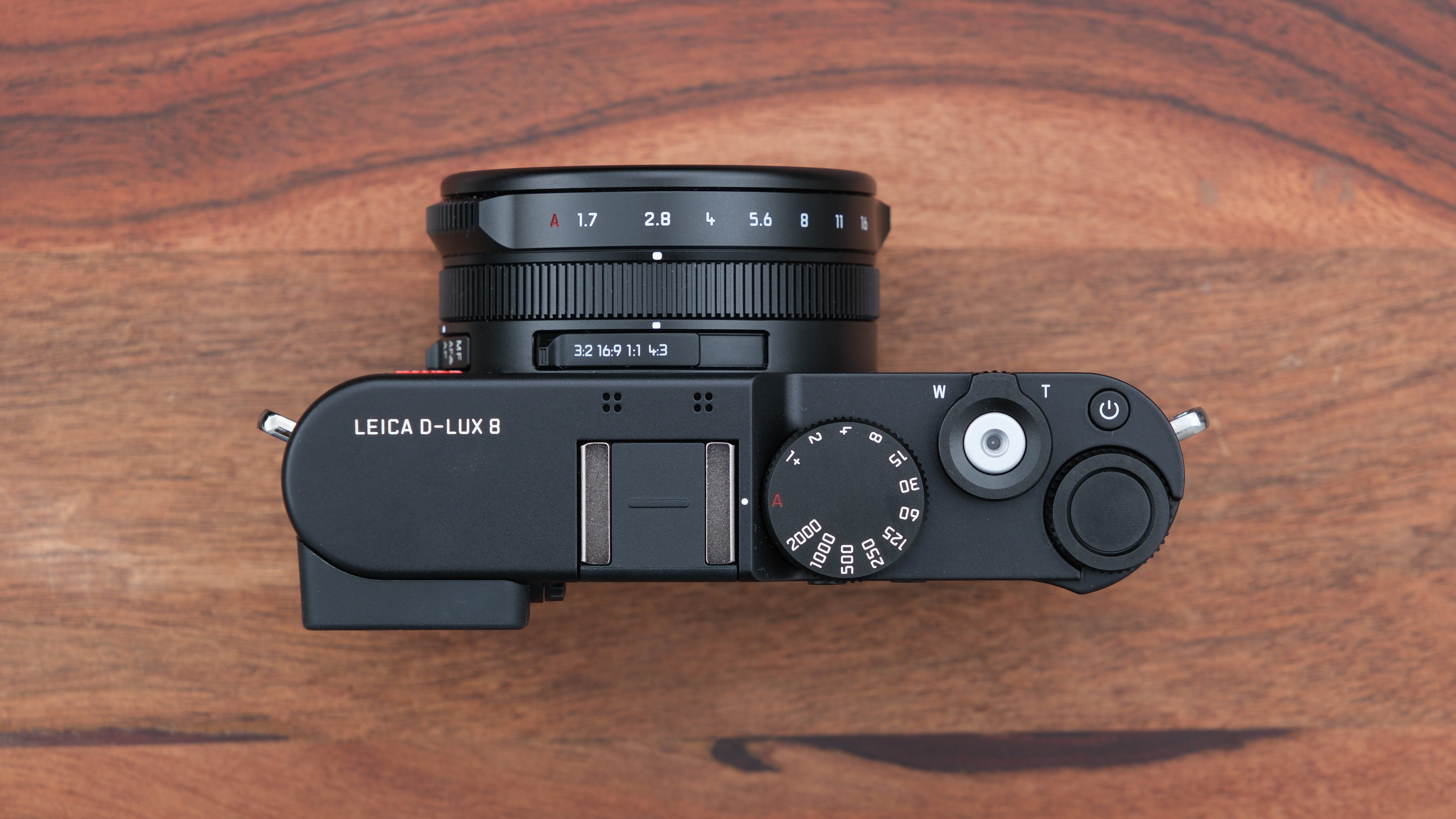
But to throw a spanner in the works, Xiaomi also makes a very cool camera case for the 15 Ultra that comes as close as I think we’ve seen yet of turning any phone into a compact camera. The case adds a deeper hand grip, a thumb grip, a proper shutter button, a zoom toggle, a control wheel, and a record button! It still doesn’t quite match up to the D-Lux for overall control, but it's a damn cool piece of photography kit.
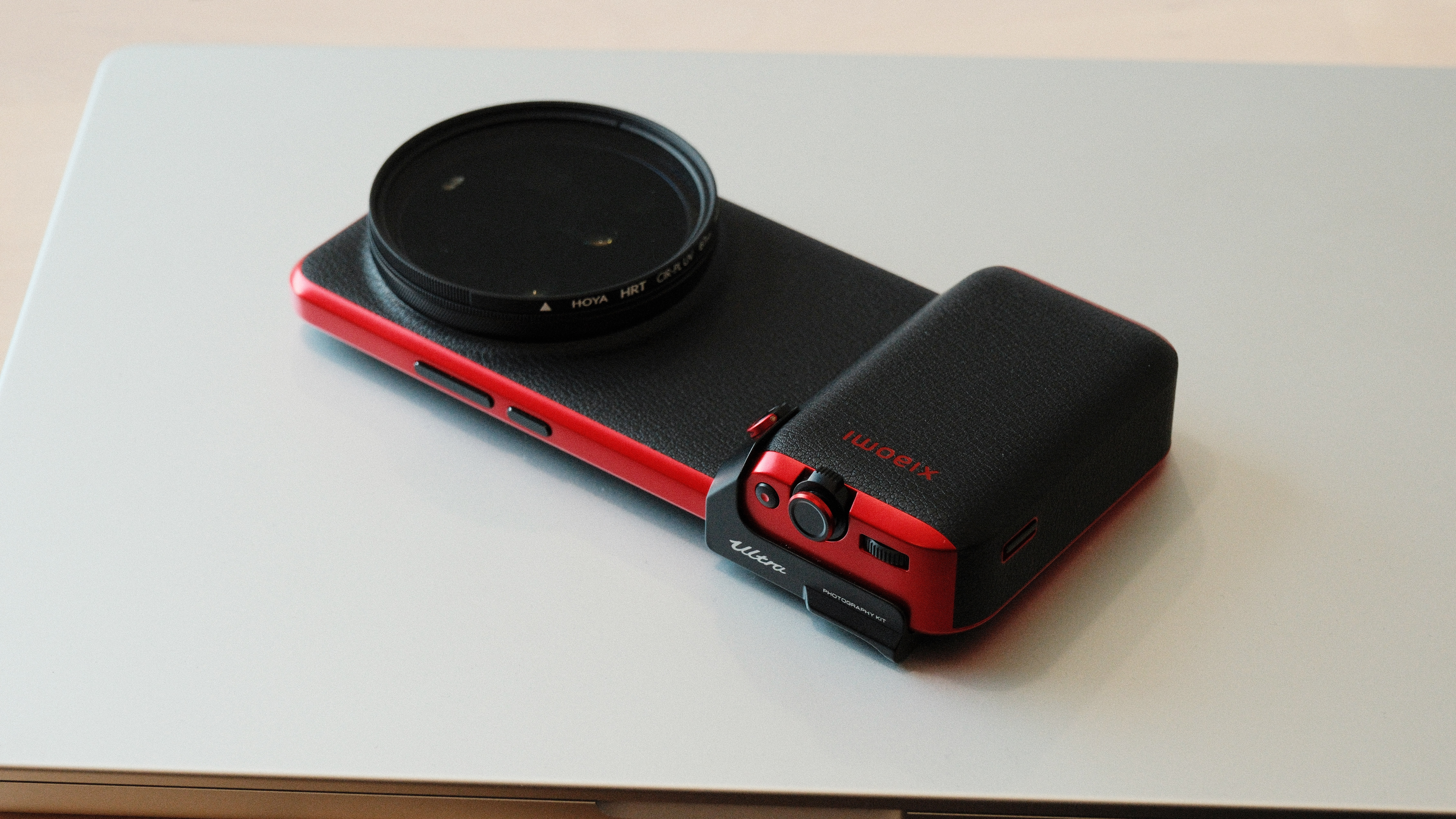
Price
- Leica D-Lux 8: $1,915 / £1,450 / AU$2,850
- Xiaomi 15 Ultra: £1,299 (~$1,395 / ~AU$2,156)
Surprisingly, for two products with the word Leica in their names – neither costs an exorbitant amount of money. The Leica D-Lux 8 comes in at $1,915 / £1,450 while the Xiaomi 15 Ultra costs £1,299, with the photography kit costing an additional £179. The downside of that, outside of Europe and Asia, you will have to import the 15 Ultra, as Xiaomi currently has no plans to bring the phone to more markets. The D-Lux is more globally available, but has been suffering stock shortages since its release.
While the larger sensor, EVF, dials, and mechanical zoom lens are all reasons that I think the D-Lux 8’s price is entirely justified, it just can’t compete against the value of the Xiaomi when you consider all that you can do with the device – cameras and beyond. The Xiaomi cameras not only outperform the D-Lux 8, but it is also a device where you can jump from taking amazing photos, to editing them, to posting them, all with a few taps.
But compact cameras are about the holistic slower photography experience, and the D-Lux 8 offers distraction-free photography. And if street cred is what you’re after – only the D-Lux has the red dot logo.
Verdict
This was a tougher call than I expected. There is surprisingly little to separate the two when it comes to image quality. Both cameras produce really nice images, however, the Xiaomi takes the overall crown just for its versatility. The additional cameras producing up to 200mm images with amazing clarity trump the 75mm top end of the D-Lux 8, and despite the difference in sensor sizes, the MTF sensor in the D-Lux 8 did little to persuade me that bigger is better, with Xiaomi’s computational photography more than making up for any discrepancies.
The additional ability to edit and share images directly from the phone also make it the more convenient option. The Xiaomi is also the clear and outright winner when it comes to video, with the D-Lux 8 barely worth consideration in this department.
But the real buying decision comes down to what kind of device you really want for taking images. The Xiaomi is a good device to use for photography in its kit but – for a pure distraction-free photography experience – you still can't compete with a dedicated camera. For that, the D-Lux 8 is a lightweight compact camera with a stunning design and easy-to-use manual controls.

Gareth is a photographer based in London, working as a freelance photographer and videographer for the past several years, having the privilege to shoot for some household names. With work focusing on fashion, portrait and lifestyle content creation, he has developed a range of skills covering everything from editorial shoots to social media videos. Outside of work, he has a personal passion for travel and nature photography, with a devotion to sustainability and environmental causes.
You must confirm your public display name before commenting
Please logout and then login again, you will then be prompted to enter your display name.

